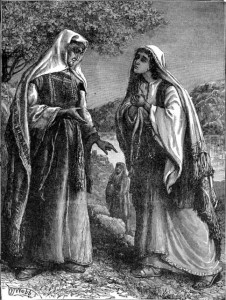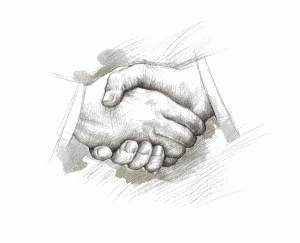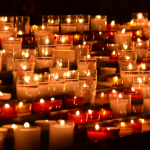In every generation throughout Jewish history there have been people who desired to enter into the Covenant of Israel and join their fate with the fate of the Jewish people. The earliest examples we have of such people are from the Tanach. The story of Ruth and her journey to the People of Israel became the paradigmatic story of conversion for the early rabbis1. Before Ruth rabbinic tradition speaks of Abraham as the first convert2 or of all of the Jewish people standing at Sinai as all converts3. Regardless of where conversion began, there has always been paths open for people who have yearned to convert to Judaism.
rabbis1. Before Ruth rabbinic tradition speaks of Abraham as the first convert2 or of all of the Jewish people standing at Sinai as all converts3. Regardless of where conversion began, there has always been paths open for people who have yearned to convert to Judaism.
Unfortunately, nowadays we are facing a tremendous amount of internal conflict, power struggle and strife within the Orthodox rabbinic community that has directly impacted the personal status of thousands of people who have already converted and made the path towards conversion that much more murky and unclear for those seeking conversion through Orthodox auspices4. Most of these power struggles are between the segments within the American Orthodox rabbinate and between the American Orthodox rabbinate and the Chief Rabbinate of Israel. It is not the intent of this blog post to go into details of the dispute itself, many other people have done so and if one is curious they should read those materials. The truth is almost everyone involved in these disputes are convinced of the rightness of their approach and feel they have the best interest of the Jewish people at heart.
This, however, in my opinion is not the crux of the issue. While it is true that everyone involved feels the genuineness of their case and are advocating for what they believe is best long-term for the integrity of Torah and of the Jewish people, in the meantime, the Orthodox rabbinate has butchered its conversion processes and made the path forward for prospective converts extremely shaky, unreliable and tumultuous. This is not in the best interest of Orthodox Judaism nor for the Jewish community as a whole. It is imperative that conversion through Orthodox Judaism be a viable option for people that does not involve a constant second guessing of the validity of their conversion. In my time as a rabbi on a large college campus I have dealt with several cases of people who are the children of non-Orthodox conversions who now have the need to convert through Orthodoxy because of their own personal journey, life status issues, or simply a desire to be recognized as Jewish in the entire Jewish community and not only in their specific denomination.
Orthodoxy bears a sacred responsibility of maintaining a path for conversion that remains true to Torah and halacha while being possible for people from a variety of socio-economic, educational, racial and other backgrounds to access it. This requires members of the  Orthodox rabbinic community to see from a “balcony perspective” and to understand the greater picture and the impact on all of the Jewish people and not only their own specific community. This also requires leaders of the Orthodox rabbinic community to move towards internal compromise for the sake of something much larger than their own individual principles and values.
Orthodox rabbinic community to see from a “balcony perspective” and to understand the greater picture and the impact on all of the Jewish people and not only their own specific community. This also requires leaders of the Orthodox rabbinic community to move towards internal compromise for the sake of something much larger than their own individual principles and values.
I have my own perspective and understanding of how a halachic conversion process should function. Yet, for the sake of the larger Jewish world and for the sake of the untold amount of people who either have already converted or who are seeking a path towards joining the Jewish people that will bring universal recognition and avoid future difficulties for them or their children, the disputes must end and compromise and reconciliation must begin.












